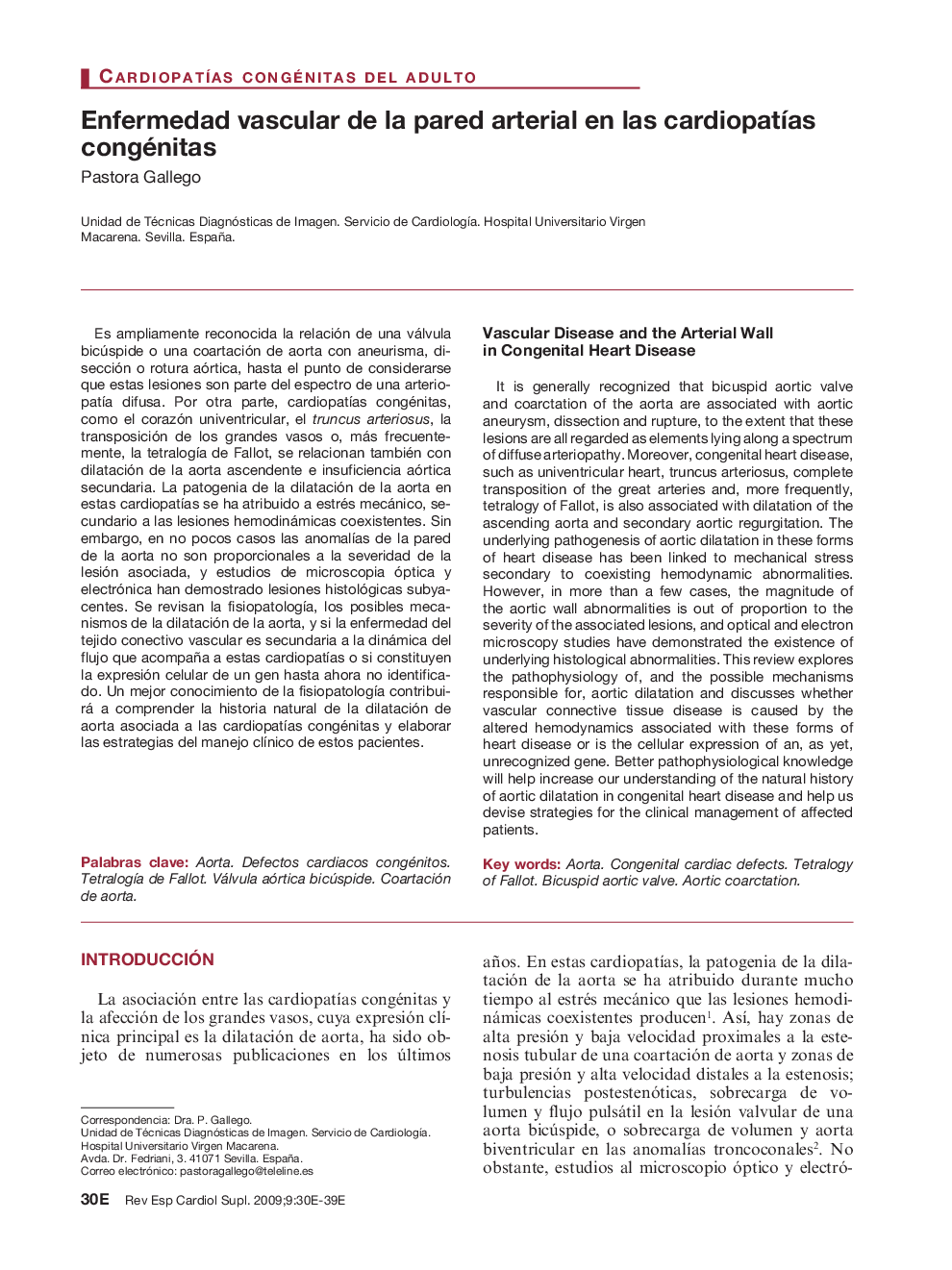| کد مقاله | کد نشریه | سال انتشار | مقاله انگلیسی | نسخه تمام متن |
|---|---|---|---|---|
| 3019568 | 1182241 | 2009 | 10 صفحه PDF | دانلود رایگان |

Es ampliamente reconocida la relación de una válvula bicúspide o una coartación de aorta con aneurisma, disección o rotura aórtica, hasta el punto de considerarse que estas lesiones son parte del espectro de una arteriopatía difusa. Por otra parte, cardiopatías congénitas, como el corazón univentricular, el truncus arteriosus, la transposición de los grandes vasos o, más frecuentemente, la tetralogía de Fallot, se relacionan también con dilatación de la aorta ascendente e insuficiencia aórtica secundaria. La patogenia de la dilatación de la aorta en estas cardiopatías se ha atribuido a estrés mecánico, secundario a las lesiones hemodinámicas coexistentes. Sin embargo, en no pocos casos las anomalías de la pared de la aorta no son proporcionales a la severidad de la lesión asociada, y estudios de microscopia óptica y electrónica han demostrado lesiones histológicas subyacentes. Se revisan la fisiopatología, los posibles mecanismos de la dilatación de la aorta, y si la enfermedad del tejido conectivo vascular es secundaria a la dinámica del flujo que acompaña a estas cardiopatías o si constituyen la expresión celular de un gen hasta ahora no identificado. Un mejor conocimiento de la fisiopatología contribuirá a comprender la historia natural de la dilatación de aorta asociada a las cardiopatías congénitas y elaborar las estrategias del manejo clínico de estos pacientes.
It is generally recognized that bicuspid aortic valve and coarctation of the aorta are associated with aortic aneurysm, dissection and rupture, to the extent that these lesions are all regarded as elements lying along a spectrum of diffuse arteriopathy. Moreover, congenital heart disease, such as univentricular heart, truncus arteriosus, complete transposition of the great arteries and, more frequently, tetralogy of Fallot, is also associated with dilatation of the ascending aorta and secondary aortic regurgitation. The underlying pathogenesis of aortic dilatation in these forms of heart disease has been linked to mechanical stress secondary to coexisting hemodynamic abnormalities. However, in more than a few cases, the magnitude of the aortic wall abnormalities is out of proportion to the severity of the associated lesions, and optical and electron microscopy studies have demonstrated the existence of underlying histological abnormalities. This review explores the pathophysiology of, and the possible mechanisms responsible for, aortic dilatation and discusses whether vascular connective tissue disease is caused by the altered hemodynamics associated with these forms of heart disease or is the cellular expression of an, as yet, unrecognized gene. Better pathophysiological knowledge will help increase our understanding of the natural history of aortic dilatation in congenital heart disease and help us devise strategies for the clinical management of affected patients.
Journal: Revista Española de Cardiología Suplementos - Volume 9, Issue 5, 2009, Pages 30–39